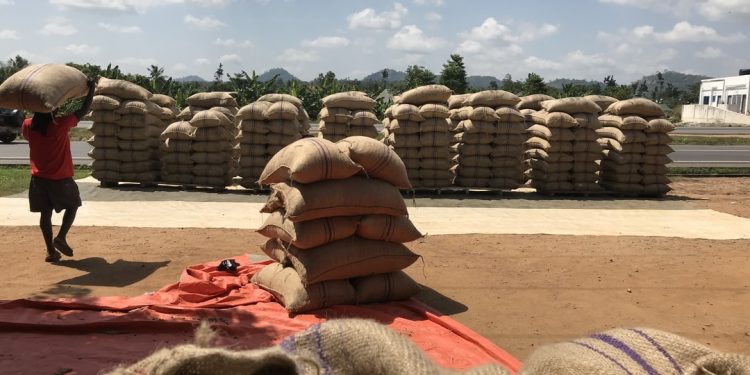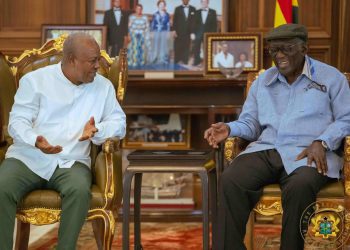The price of a 64-kilogramme bag of cocoa has been increased by GH₵128.75, moving from GH₵3,100 to GH₵3,228.75 for the upcoming 2025/2026 cocoa season, representing a 4% rise in local currency terms.
This upward adjustment in the bag price follows a far more dramatic shift in the international pricing structure, where the government has announced a significant jump in the producer price of cocoa from US$3,100 per tonne to US$5,040 per tonne—a 62.58% increase aimed at better aligning local farmer earnings with global market trends.
The revised prices were approved at a recent meeting of the Producer Price Review Committee (PPRC), chaired by a senior government representative, ahead of the official opening of the new cocoa season on Thursday, August 7, 2025.
Fulfilment of 70% FOB promise
The newly announced price of US$5,040 per tonne is equivalent to 70% of the gross Free-On-Board (FOB) value of US$7,200 per tonne—a policy that the government says reflects President John Mahama’s promise to ensure cocoa farmers receive a guaranteed 70% of international market prices.
“This is a major step forward for cocoa farmers. The decision is not only bold, but it also fulfils our commitment to give farmers a fairer share of the global cocoa value chain,” the committee chairperson said in a statement issued after the meeting.
In a veiled comparison with the former administration, the government pointed out that for the 2024/2025 cocoa season, the New Patriotic Party (NPP) government had pegged the FOB value at US$4,850 per tonne, yet offered farmers only US$3,100 per tonne—equivalent to 63.9% of the international price, despite favourable global market conditions at the time.
Critics of the previous pricing formula had long argued that it shortchanged cocoa farmers, limiting their ability to reinvest in their farms or cope with inflationary pressures.
The sharp increase in the producer price comes at a time when global cocoa prices are experiencing unprecedented highs, driven by production shortfalls in top producers and rising demand. Ghana, which ranks second only to Côte d’Ivoire in global cocoa output, stands to benefit significantly from this trend, provided the gains are equitably passed on to local producers.
The government’s move to set the producer price at 70% of FOB marks a departure from past practices and brings Ghana closer to compliance with the Living Income Differential (LID) framework introduced by Ghana and Côte d’Ivoire in recent years to boost farmer incomes.
Initial reactions from cocoa farmer groups and cooperatives have been largely positive, with many welcoming the increase as long overdue.
However, farmer leaders have also urged the government to ensure prompt payment for produce, warning that delays in receiving money for delivered cocoa have historically undermined the value of even the most generous price hikes.
“Price increases are welcome, but if payments are delayed or irregular, the benefits are eroded. We urge the Ghana Cocoa Board (COCOBOD) to make sure the new prices come with timely and efficient payment systems,” said Kwame Yeboah, a cocoa farmer and union leader in the Western North Region.
Political undertones and implications
While the announcement has been framed as a farmer-centred policy initiative, observers note that it also has strong political undertones, coming just months ahead of the 2026 general elections.
The direct comparison with the NPP government’s pricing strategy suggests the current administration is keen to win support in cocoa-growing regions, where rural votes often prove decisive.
Nevertheless, policy analysts agree that the scale of the price adjustment, particularly in dollar terms, is noteworthy and could significantly improve the welfare of farmers if matched with operational efficiency and transparency in the sector.
As the 2025/2026 cocoa season officially opens on Thursday, August 7, all eyes will be on the implementation process—particularly how COCOBOD, licensed buyers, and logistics operators handle the transition to the new pricing regime.
Ghana’s cocoa sector at a glance
Over 800,000 Ghanaian farmers depend on cocoa cultivation.
Cocoa contributes about US$2 billion annually in foreign exchange.
Ghana is the second-largest cocoa exporter globally, after Côte d’Ivoire.











